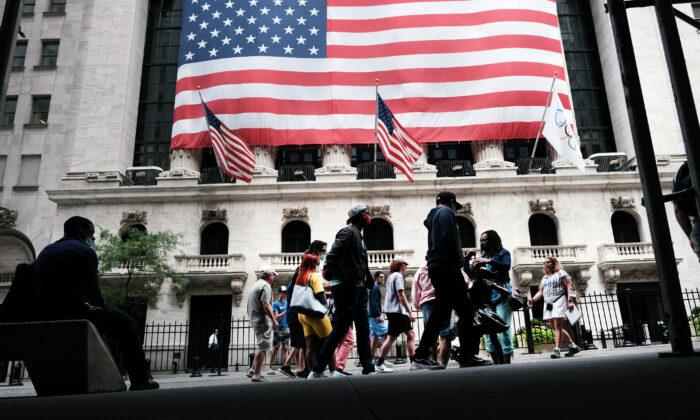Business activity in New York State expanded at a significantly slower pace in August than in the prior month, even as input prices rose sharply and the pace of selling price increases set a record high, painting a picture of softening business conditions combined with high inflationary pressures.
Readings above zero in any of the survey’s indexes—which cover areas such as new orders, number of employees, and prices—indicate growth.
The results are based on a monthly survey of around 200 top executives across various manufacturing industries, typically the president or CEO. Just over one-third of the respondents said overall business conditions had improved over the month, while 16 percent reported that conditions had worsened.
But while business activity growth slowed over the month, input prices continued to rise sharply, and the pace of selling price growth set a new record.
After hitting an all-time high of 76.8 in July, the prices paid index dipped by less than one point to 76.1 in August, remaining historically elevated. The prices received index jumped by 6.6 points to 46 points in August, hitting an all-time high.
Both of the six-months-ahead price gauges remained near historic highs. The forward-looking input price measure ticked up by 1.8 points to 66.4, while the selling price gauge fell by 5.4 points to a still-high 52.2.
The new orders index dropped 18 points to 14.8 in August, pointing to relatively strong expansion, while the shipments gauge plunged nearly 40 points over the month to 4.4, indicating growth was slight.
“Weaker shipments, orders, and jobs combined to drive down the Empire manufacturing index to 18.3 for August (43.0 for July and a consensus of 28.5). Not clear whether it’s a one-off or an early indication of a generalized loss of momentum,” he wrote.
The number of employees index dropped 7.8 points to 12.8 in August, while the average employee workweek gauge fell 5.1 points to 8.9, indicating a modest rise in employment and hours worked.

The New York Fed survey comes amid broader concerns about inflationary pressures in the U.S. economy, with inflation measures like the producer price index (PPI) and the consumer price index (CPI) surging in recent months.
While maintaining that inflationary pressures will fade once pandemic-related supply chain dislocations moderate, Fed officials have acknowledged the threat of inflation and are in discussions about when to begin pulling back on the central bank’s extraordinary stimulus measures.
Last year, the Fed cut its benchmark overnight interest rate to near zero and began buying $120 billion in Treasuries and mortgage-backed securities each month to bolster the economy.
While Fed policymakers are in talks about how and when to begin dialing back the crisis-era measures, they have made jobs market recovery a condition of tighter monetary policy. Economic output has fully bounced back to its pre-pandemic levels, but the labor market recovery is trailing.
The U.S. economy remains around 5 million jobs down from before the outbreak. After shedding more than 22 million jobs in the first two months of the pandemic, the U.S. economy has since recovered nearly 17 million jobs.





